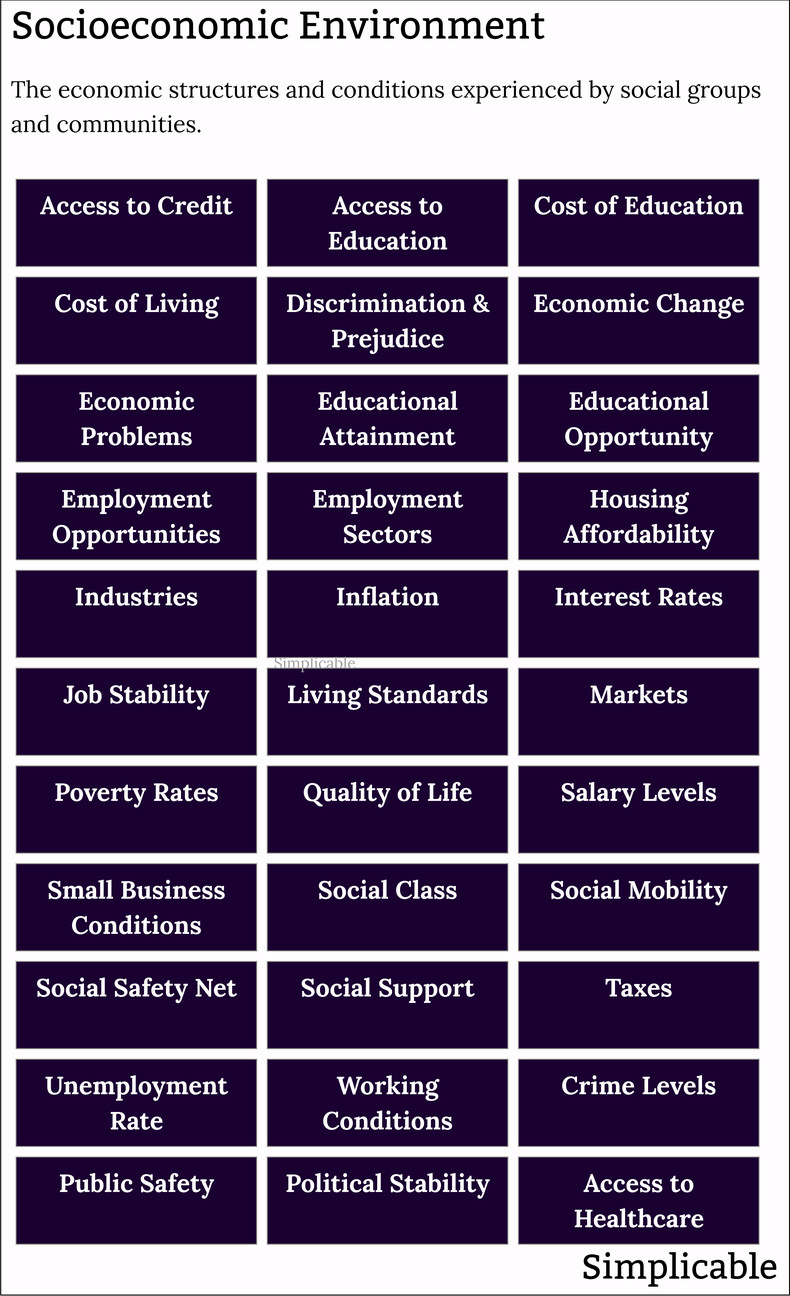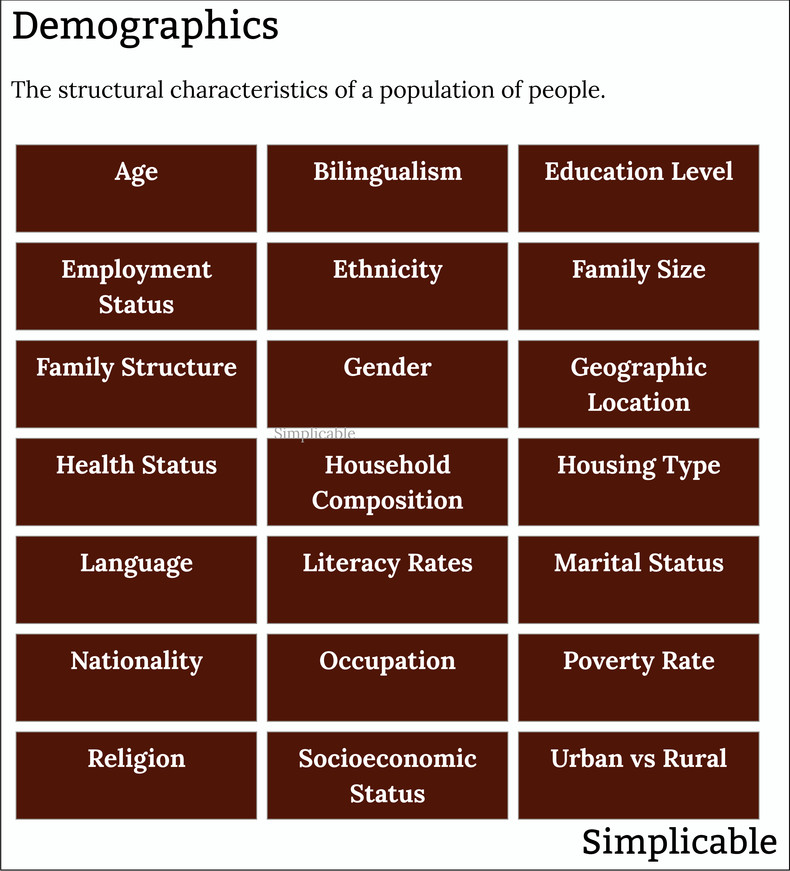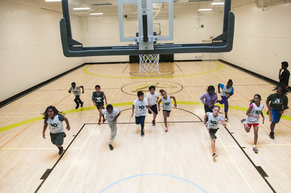
Academic Programs | Art Scenes |
Businesses | Charities |
Cities | Cliques |
Communities | Cultures |
Demographic Environments | Economic Environments |
Events | Families |
Festivals | Friendships |
Game Environments | Immersive Experiences |
Industries | Institutions |
Marriages & Partnerships | Music Scenes |
Nations | Neighborhoods |
Online Environments | Organizations |
Political Organizations | Professions |
Protests | Recreational Events |
Religions | School Classes |
School Clubs & Activities | Social Class (e.g. middle class) |
Social Groups | Social Media |
Social Roles | Societies |
Sports Teams | Subcultures |
Teams | Total Institutions |
Towns | Travel Experiences |
Urban / Rural Settings | Volunteering |
Community Context
The characteristics of a community such as a neighborhood, city or town. This applies where a social environment relates to a specific geographical place.
Socioeconomic Environment
The economic structures, systems and conditions faced by people in a community or social group. For example, a social environment that provides ample educational and employment opportunities that also has a relatively high cost of living.
Demographics
The structure of a population such as a city or neighborhood. For example, a social environment with an aging population and declining birth rate.
Social Groups
Groups that spend time together and perceive each other as belonging to the same group or identity. Individuals typically belong to multiple social groups that form their social environment. For example, a teenager who belongs to a family, a school and a group of friends.
Cultural Environment
The cultures that define the norms, expectations, traditions and beliefs of the social environment. This is typically complex with multiple cultures such as national cultures, regional cultures, ethnic cultures, organizational cultures, political cultures, generational cultures and so forth that may apply to a single situation.
Social Institutions
Social structures and systems that are durable such that they are sustained over time. These provide stability and shape the social environment.






































